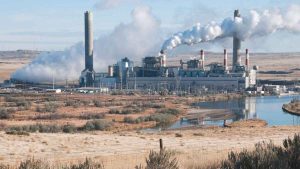Air Quality Life Index : New Study

Air pollution has emerged as India’s most severe health threat, reducing the country’s average life expectancy by 3.5 years, according to the Air Quality Life Index (AQLI) 2025 report .
- Air Quality Life Index (AQLI) measures particulate air pollution’s impact on life expectancy.
- Developed by Michael Greenstone and Energy Policy Institute (EPIC) at the University of Chicago, the AQLI quantifies pollution’s effects.
- The AQLI combines research on long-term air pollution exposure with global particulate pollution measurements.
- It provides insight into the true cost of air pollution on communities worldwide.
Highlights of the AQLI 2025 Report:
- Air pollution has emerged as India’s most severe health threat, reducing the country’s average life expectancy by 3.5 years.
- Toxic air robs Indians of nearly twice as many years as childhood and maternal malnutrition and more than five times the impact of unsafe water, sanitation, and handwashing.
- All 1.4 billion Indians live in areas where pollution levels exceed the World Health Organization’s (WHO’s) safe limit of 5 µg/m³ for PM2.5.
- The northern belt is still the world’s most polluted zone, with 544.4 million people (38.9 percent of India’s population) living under severe air pollution.
- Delhi-NCR is the worst hit, with residents facing a loss of 8.2 years in life expectancy (based on WHO’s standard).
- Bihar: 5.6 years lost
- Haryana: 5.3 years lost
- Uttar Pradesh: 5 years lost
- Even by India’s weaker PM2.5 standard of 40 µg/m³, Delhi-NCR residents would still lose 4.74 years of life expectancy.
- Shockingly, the report notes that 46 percent of Indians live in areas that exceed even India’s own PM2.5 standards.
- If pollution levels were reduced to meet this national benchmark, Indians could gain an average of 1.5 years of life expectancy.
- Meeting WHO’s stricter 5 µg/m³ guideline could add up to 9.4 months even in cleaner regions.
- The AQLI report underlines that South Asia is the most polluted region globally, with PM2.5 concentrations rising 2.8 percent in 2023 after a brief dip in 2022.




